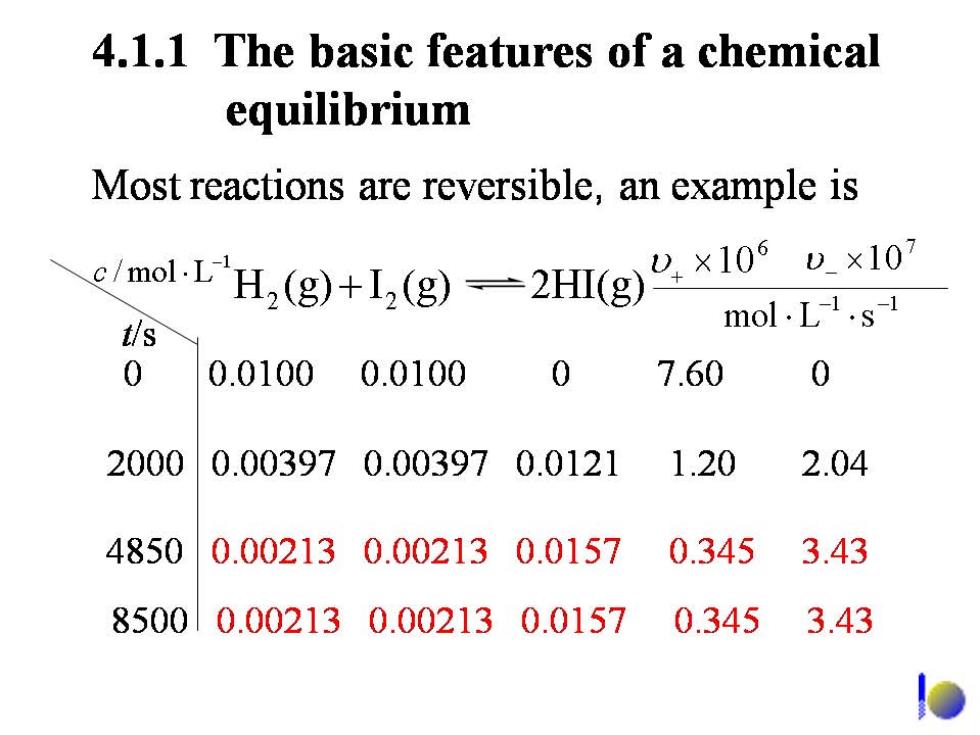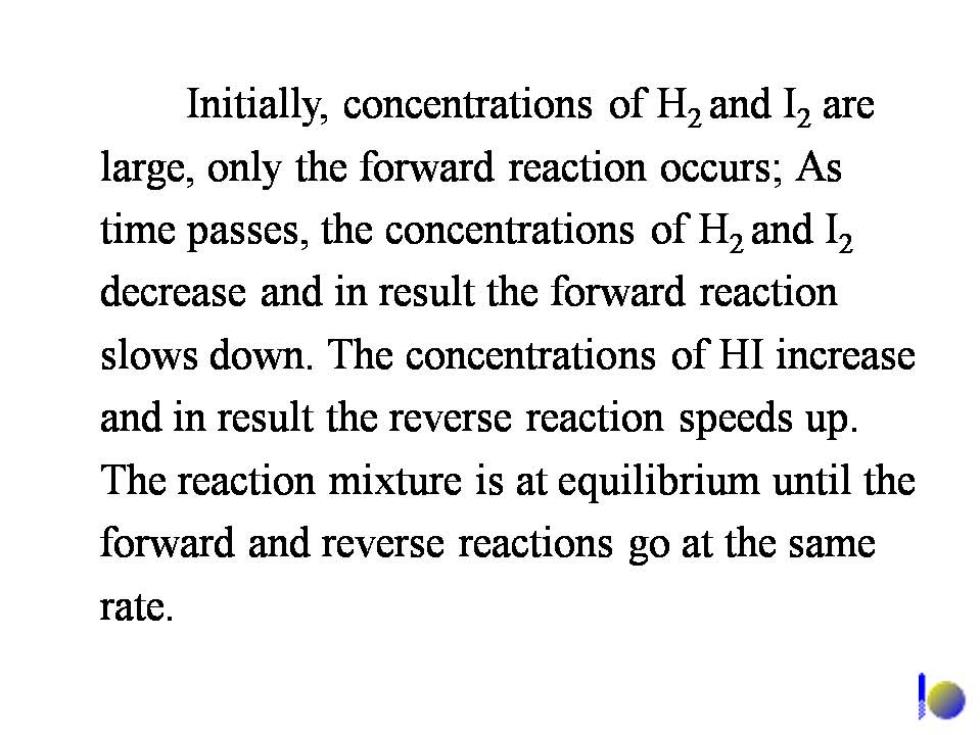
Chapter 4 Chemical equilibria, entropy and Gibbs function §4.1 The standard equilibrium constant §4.2 The application of the standard equilibrium constant 4.3 The shift of a chemical equilibrium 4.4 Spontaneous reactions and entropy §4.5 Gibbs function

4.1 The standard equilibrium constant 4.1.1 The basic features of a chemical equilibrium 4.1.2 The standard equilibrium constant expression 4.1.3 Experimental measurement of the standard equilibrium constant

4.1.1 The basic features of a chemical equilibrium Most reactions are reversible,an example is en-LH,(g+1,(g一2H(g”×10°u×10 t/s mol.L1.s-1 0 0.01000.0100 0 7.60 0 2000 0.003970.003970.0121 1.20 2.04 4850 0.002130.002130.0157 0.345 3.43 85000.002130.002130.01570.3453.43

Initially,concentrations of H,and I,are large,only the forward reaction occurs;As time passes,the concentrations of H,and I2 decrease and in result the forward reaction slows down.The concentrations of HI increase and in result the reverse reaction speeds up. The reaction mixture is at equilibrium until the forward and reverse reactions go at the same rate. lo

05 (7ow) HI 0逆 H2,lz t/s H,(g)+I,(g)=2HⅡ(g) 550 HI 2HI(g)≠H2(g)+2(g) H2,h t/s